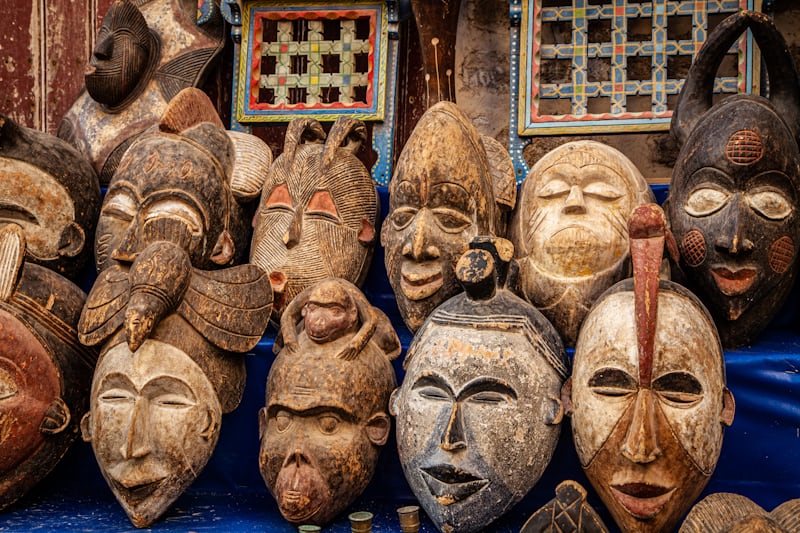Introduction
Every culture has stories, and every story has colors. From the ochre markings on cave walls to the neon lights of a modern city, color has never been neutral. It speaks, it whispers, it shouts. It comforts and it unsettles. Long before we had formal languages to describe feelings, we had the capacity to react to shades of light. Colors were the original storytellers, giving shape to the invisible emotions we struggle to pin down in words. In art, color is not just decoration; it is the spine of the narrative. It carries history, culture, and personal identity, as if the spectrum itself were a book written in tones and hues.
The Ancient Language of Color
Our ancestors understood instinctively that color held power. The earliest humans used earthy pigments to mark animals and figures on stone walls. Red was not merely red—it was blood, life, death, and ritual. Yellow was not only the sun but also a divine presence that made survival possible. In ancient Egypt, blue lapis lazuli was reserved for gods and royalty, because its rarity and brilliance marked a kind of spiritual authority. Across Asia, deep reds became tied to prosperity and celebration, while in Europe white symbolized purity and sometimes the ghostly realm of death. Even without science, people knew that colors moved us, organized our societies, and recorded meaning in ways no spoken word could.
The Renaissance and the Birth of Symbolism
When the Renaissance reshaped Europe’s cultural imagination, artists became masters at embedding symbolism in color. Painters like Giotto and Michelangelo built narratives in their frescoes not only through form but through palette. Blue robes draped over the Virgin Mary signified humility and heaven. Gold backgrounds in Byzantine icons suggested eternity and divinity, as if viewers were looking at another dimension. Every tint in the paint was chosen not just for realism but for the story it would tell to viewers who often could not read. Color became a public language, accessible across classes. One did not need to be literate to understand the divine suggestion in a glowing halo of light yellow or the foreboding darkness in stormy gray.
Romantics and the Emotional Palette
By the 18th and 19th centuries, the Romantics pushed color into the realm of pure emotion. Artists like J.M.W. Turner painted skies of such fiery intensity that they seemed to swallow ships whole. His storms were not only meteorological but psychological—blazing oranges and burning reds pulled viewers into awe and terror at once. Caspar David Friedrich, meanwhile, used subdued palettes of cold blues and foggy grays to frame solitary figures in vast landscapes. His colors spoke of longing, loneliness, and the search for meaning in the infinite. These artists understood that color was not just a tool to illustrate nature—it was a portal into the human soul.
Impressionists and the Science of Light
Then came the Impressionists, who treated color as a direct sensory experience. Claude Monet’s water lilies shimmered in constantly shifting blues and greens, making viewers feel the passage of time and the dance of light on water. Instead of using black for shadows, Impressionists layered complementary colors, teaching us that perception was dynamic. Vincent van Gogh took this further. His yellows in Starry Night were not calm sunflowers—they pulsed with urgency, almost vibrating off the canvas. His blues weren’t passive; they were cosmic, dizzying, melancholic. Van Gogh turned color into autobiography, into diary entries written in paint. He showed how a palette could be as personal as handwriting.
Modernism and the Break from Realism
With the 20th century came modernism, abstraction, and a radical break from color as realism. Wassily Kandinsky argued that colors had musical equivalents—that yellow was like a trumpet, blue a cello, and red a blazing drum. He painted not landscapes or portraits but symphonies of shapes and hues, inviting viewers to hear color as much as see it. Later, Mark Rothko’s giant canvases of floating reds, blacks, and yellows became spaces for meditation. His work did not depict anything concrete, yet standing before it often moved people to tears. Why? Because color alone could carry the weight of despair, transcendence, or calm. It was a reminder that we don’t need objects to feel something; color itself is the subject.
Non-Western Perspectives on Color Storytelling
It is important not to treat the history of color in art as solely European. Across Asia, Africa, and the Americas, color has carried equally profound symbolic weight. In India, festivals like Holi explode with powders of every shade, telling stories of renewal, love, and divine playfulness. In West Africa, kente cloth patterns are not just decorative—they encode lineage, community roles, and political statements through color and design. In Indigenous art of the Americas, pigments from plants and minerals tie directly to the land, turning artworks into records of ecological and spiritual relationships. To look at these works only for their beauty is to miss the deeper narrative: color as archive, as living memory, as heritage passed hand to hand.
The Psychology of Color
Beyond culture, psychology has tried to understand why certain colors provoke certain emotions. Red excites because it quickens our pulse, recalling both danger and passion. Blue calms because it mirrors open skies and water, places of safety. Green reassures us because it is the color of growth and food. These associations are partly biological, partly cultural. Yet artists exploit them to guide viewers through their work. A filmmaker washes a scene in cold blues to suggest alienation. A painter infuses warmth into a portrait to suggest intimacy. Even brands know the trick—fast food chains splash red and yellow to stimulate appetite, while hospitals rely on whites and soft blues to calm patients. The psychology of color is a science, but in the hands of artists, it becomes poetry.
Color in the Digital Age
Today, the canvas has expanded from walls and museums to screens. Digital artists manipulate palettes with software that allows infinite possibilities. The neon pinks and purples of internet aesthetics tell stories about artificiality and nostalgia. Meme culture itself often hinges on color—filters and gradients signal irony, longing, or satire. Videogames create immersive worlds where palette is narrative: think of the oppressive sepia tones of dystopian landscapes versus the lush greens of fantasy forests. Color coding has even become language online: a green text bubble versus a blue one can signify identity, community, even status. Artists now tell stories not only with brushstrokes but with pixels, yet the principle remains the same: color sets the emotional stage.
The Personal Palette
Ultimately, color storytelling is also about the intimate. Every artist has a personal palette, even if they do not consciously define it. Frida Kahlo’s bold reds and deep greens reflected her physical pain and Mexican heritage. Georgia O’Keeffe’s soft pinks and whites spoke of sensuality and desert solitude. Contemporary creators, from muralists in São Paulo to digital illustrators on Instagram, all reveal something personal in their repeated hues. Audiences may not notice, but the subconscious does. To enter an artist’s world is to be bathed in their chosen light, to be colored by their internal weather.
Closing Reflections
Colors are never silent. They are always saying something, even when we are not listening. To understand art through color is to learn a second language, one that cuts across centuries and continents, one that transcends words. The next time you stand before a painting, or scroll past a digital artwork, pause to notice the palette. Ask yourself why those blues feel infinite, why those reds feel dangerous, why those yellows glow with tenderness. You may discover that you are not just looking at art—you are listening to a story written in the oldest language we know: the spectrum of light itself.

